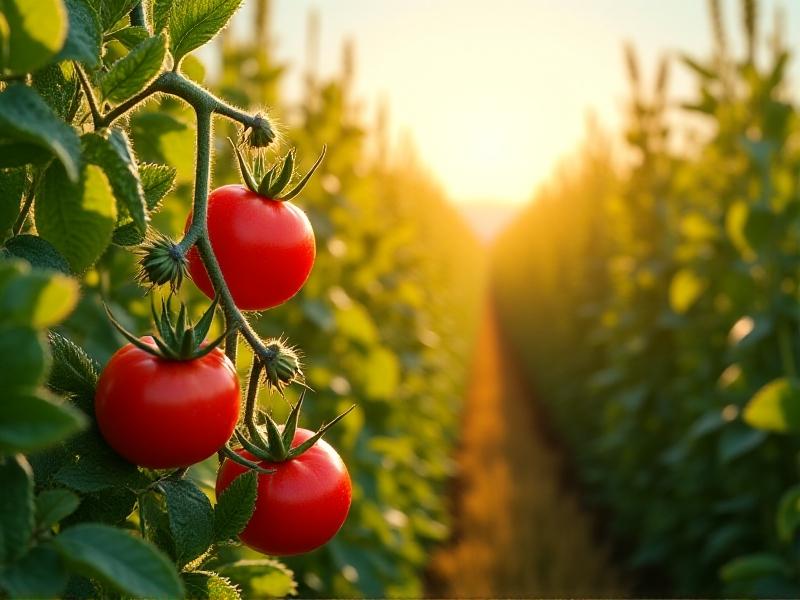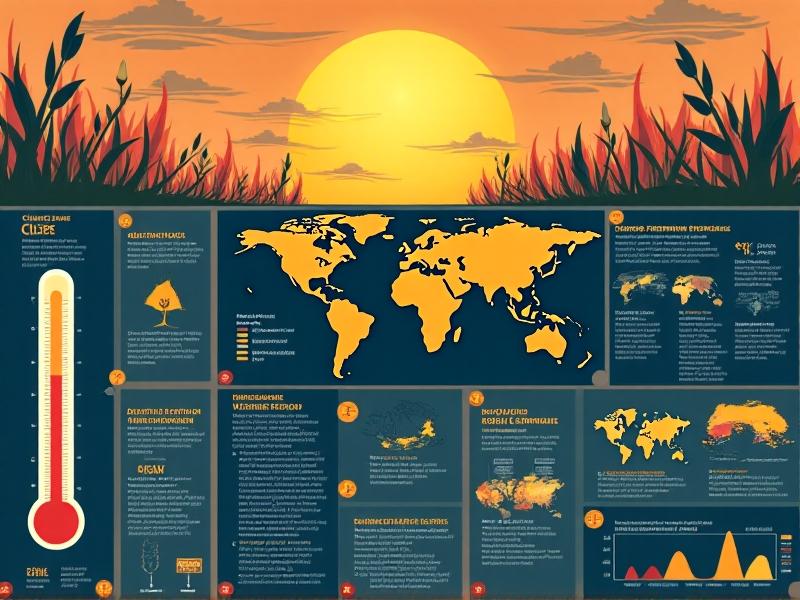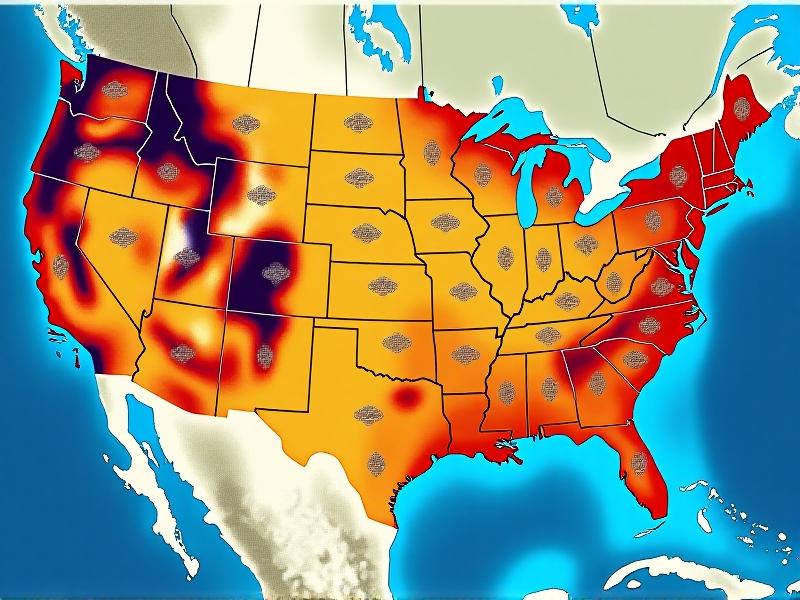Seasonal Edibles Guide: Adapting Maps to Regional Climate Shifts
Introduction: The Changing Landscape of Seasonal Edibles
As global climate patterns shift, the availability and growth cycles of seasonal edibles are undergoing significant changes. What was once a predictable harvest calendar is now a dynamic map that requires constant adaptation. This guide explores how regional climate shifts are reshaping the way we think about seasonal foods, offering insights into how to adapt and thrive in this new reality. From understanding the science behind these changes to practical tips for gardeners and consumers, this article aims to be a comprehensive resource for navigating the evolving world of seasonal edibles.

The Science Behind Climate Shifts and Agriculture
Climate change is not just a buzzword; it's a tangible force altering the agricultural landscape. Rising temperatures, shifting precipitation patterns, and extreme weather events are disrupting traditional growing seasons. For instance, warmer winters can lead to earlier blooms, making crops vulnerable to late frosts. Conversely, prolonged droughts can stress plants, reducing yields. Understanding these mechanisms is crucial for adapting our agricultural practices. Scientists are using advanced modeling to predict these changes, but the onus is also on farmers and gardeners to stay informed and flexible. By grasping the science, we can better anticipate and mitigate the impacts of climate shifts on our food supply.

Regional Variations: How Different Areas Are Affected
Not all regions are affected equally by climate shifts. Coastal areas may face rising sea levels and increased salinity, impacting crops like rice and vegetables. In contrast, arid regions might experience more frequent droughts, affecting water-intensive crops such as almonds and grapes. Understanding these regional variations is key to adapting our agricultural practices. For example, farmers in the Midwest are experimenting with drought-resistant crops, while those in the Pacific Northwest are adjusting planting schedules to account for warmer winters. By tailoring strategies to specific regions, we can better navigate the challenges posed by climate change.

Adapting Planting Schedules for Optimal Yield
One of the most immediate ways to adapt to climate shifts is by adjusting planting schedules. Traditional planting calendars are becoming less reliable, prompting farmers and gardeners to rethink their approaches. For instance, planting earlier in the spring can take advantage of warmer temperatures, but it also increases the risk of frost damage. Conversely, delaying planting can help avoid extreme summer heat. Tools like soil temperature monitors and weather apps are becoming invaluable for making informed decisions. By staying flexible and responsive, we can optimize yields and reduce the risks associated with unpredictable weather patterns.
Choosing Climate-Resilient Crops
Selecting the right crops is another critical strategy for adapting to climate shifts. Climate-resilient crops are those that can withstand extreme weather conditions, such as drought-tolerant varieties of corn or heat-resistant tomatoes. Breeding programs are increasingly focused on developing these resilient strains, but traditional knowledge also plays a role. Indigenous practices, such as intercropping and agroforestry, offer valuable insights into sustainable agriculture. By diversifying our crops and incorporating resilient varieties, we can create more robust food systems that are better equipped to handle the uncertainties of climate change.
The Role of Technology in Modern Agriculture
Technology is playing an increasingly important role in helping farmers adapt to climate shifts. Precision agriculture, which uses GPS and IoT devices, allows for more efficient use of resources like water and fertilizers. Drones and satellite imagery provide real-time data on crop health, enabling timely interventions. Additionally, AI-driven models can predict weather patterns and suggest optimal planting times. These technological advancements are not just for large-scale farms; even small-scale gardeners can benefit from apps that provide localized weather forecasts and planting advice. By leveraging technology, we can make more informed decisions and enhance the sustainability of our agricultural practices.
Sustainable Practices for Long-Term Resilience
Sustainability is key to building long-term resilience in the face of climate change. Practices such as crop rotation, cover cropping, and organic farming can improve soil health and reduce dependency on synthetic inputs. Water conservation techniques, like drip irrigation and rainwater harvesting, are essential in regions facing water scarcity. Moreover, integrating livestock with crop production can create a more balanced ecosystem. By adopting these sustainable practices, we can not only mitigate the impacts of climate change but also enhance the overall health and productivity of our agricultural systems.
Community Initiatives and Local Food Systems
Community-driven initiatives are playing a crucial role in adapting to climate shifts. Local food systems, such as farmers' markets and community-supported agriculture (CSA), are gaining popularity as people seek fresher, more sustainable options. These systems not only reduce the carbon footprint associated with food transportation but also foster a sense of community and resilience. Urban gardening projects and school gardens are also on the rise, educating the next generation about the importance of sustainable agriculture. By supporting local food systems, we can create a more resilient and equitable food supply chain that benefits both people and the planet.
Conclusion: Embracing Change for a Sustainable Future
As climate shifts continue to reshape our agricultural landscape, it's clear that adaptation is not just an option but a necessity. By understanding the science, leveraging technology, and adopting sustainable practices, we can navigate these changes and build a more resilient food system. Whether you're a farmer, gardener, or consumer, there are steps you can take to contribute to this effort. From adjusting planting schedules to supporting local food systems, every action counts. Together, we can embrace these changes and work towards a sustainable future where seasonal edibles continue to thrive, no matter what the climate brings.







